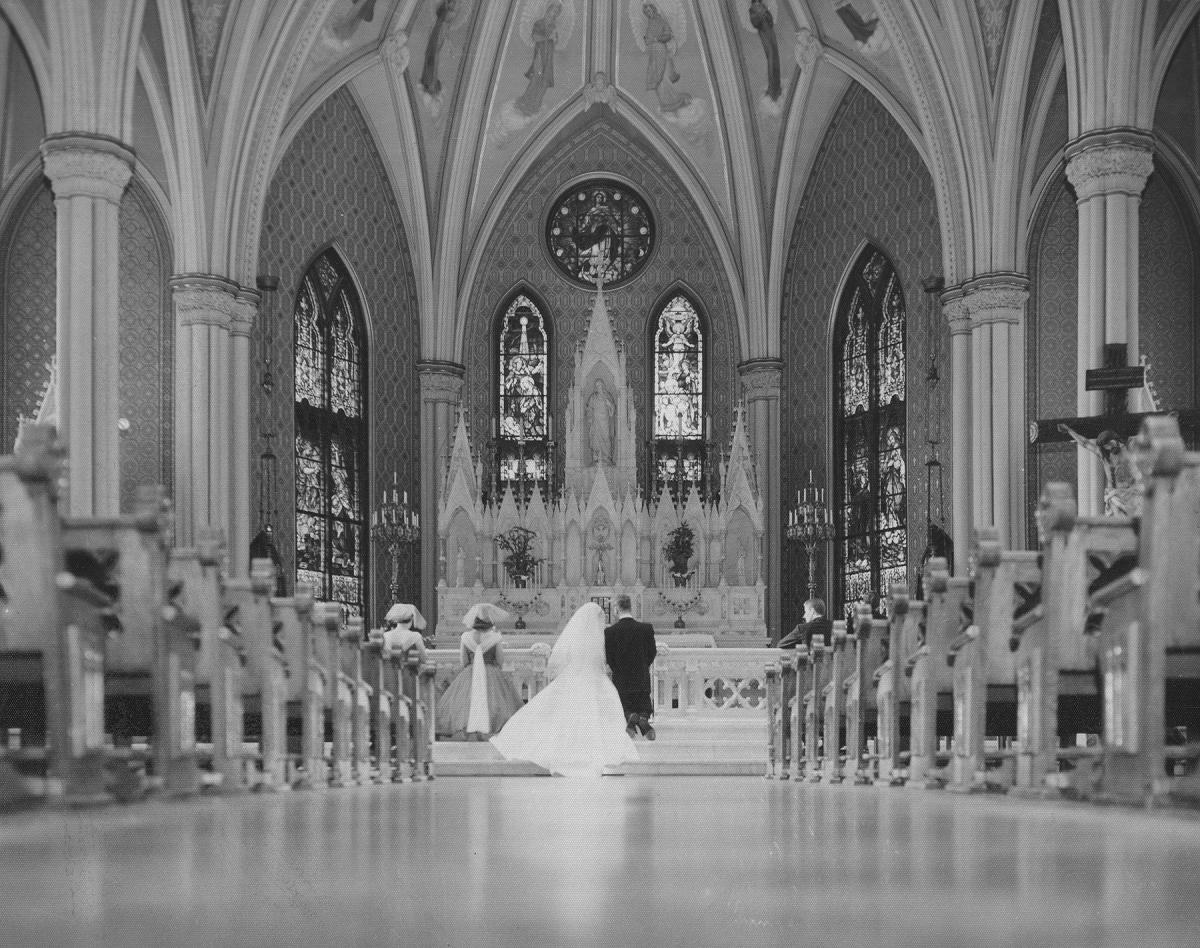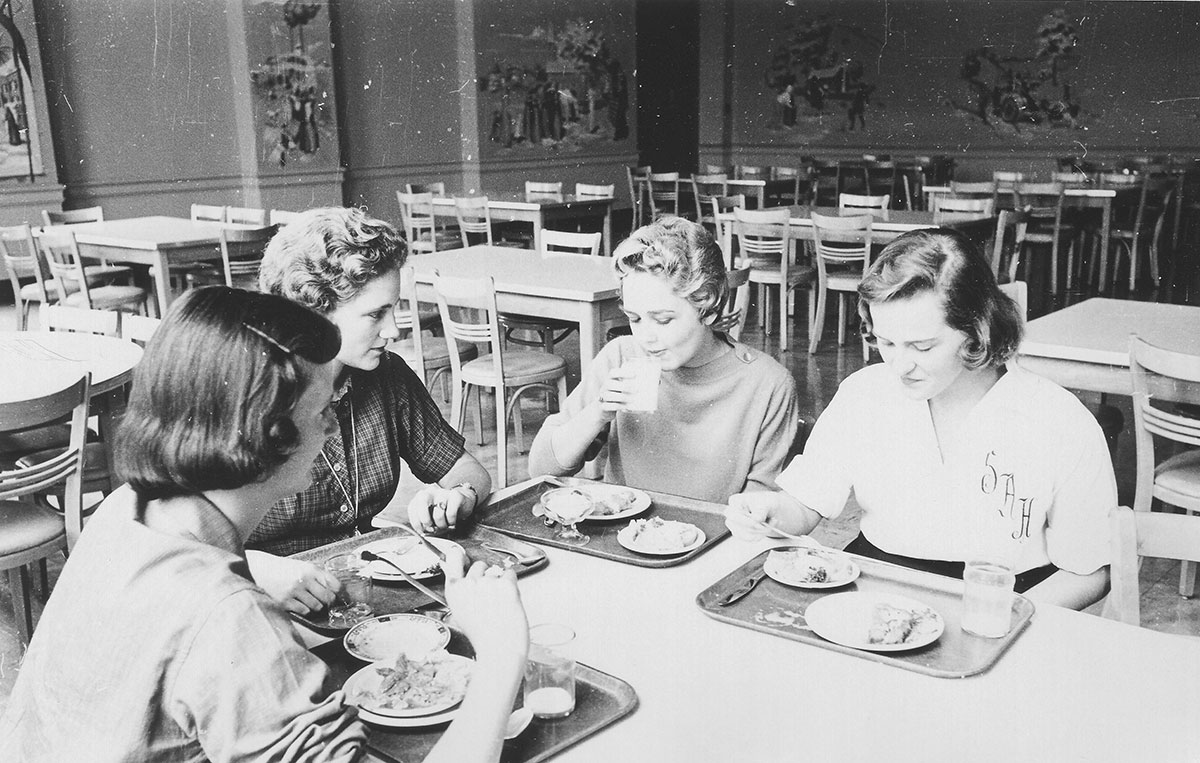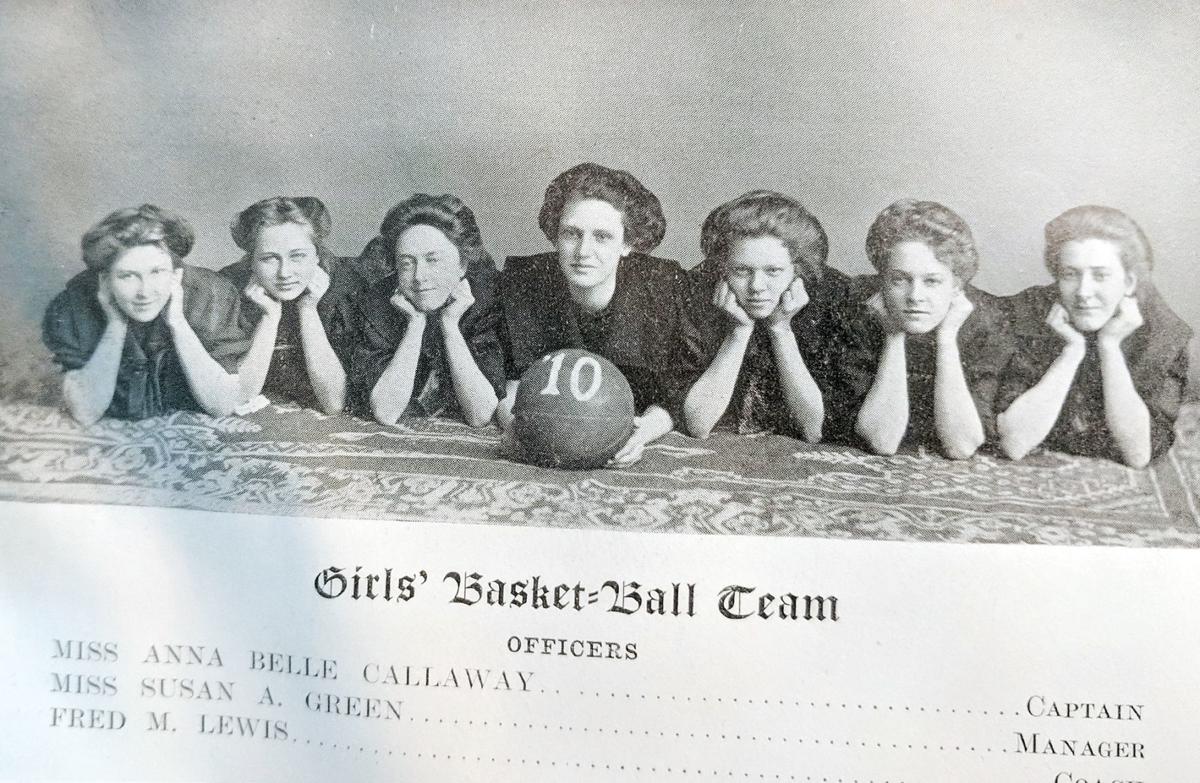Scenes from an Abandoned Civilization
June 13, 2023
[Reposted]
ALAN writes:
It stood on high ground, and the domed cupola atop the administration building was a landmark for river boat pilots on the Mississippi River. Its roots extended back to post-revolutionary France and a group of women who committed themselves to a love of God and the education of women, both rich and poor.
The Maryville Academy of the Sacred Heart in south St. Louis was a Catholic boarding school for girls — and later a college — that occupied four square blocks in what is now called the Dutchtown neighborhood. Though it attracted wealthy students, a separate school on the campus was free and open to the poor.
“With its educational roots in France, the school was based on a six-year French Lycée pattern — which included the equivalent of junior college work at the two highest levels,” according to the official history of what is now Maryville University (an entirely different institution). “Many French customs prevailed throughout the school, from the celebration of traditional French holidays (congés) to the games students played after school hours (a glorified hide and seek known as cache-cache) and even the daily snacks, or goûter. The French language was taught at all levels, and girls were encouraged to speak it at all times, especially during meals.
“School activities included lectures, recitals, concerts and even early ‘moving pictures.’ So complete was the education taught at the Academy, that—by 1900—women who continued their education after leaving the school were receiving college credit for their last two years there. By 1910, enrollment had reached 181, more than double its original.”
The school was in Dutchtown from 1872 to 1961, becoming a four-year college for women (and later men) in 1923. Photographs can be viewed here and here. They include this photo of the college’s main building:
“It was a gorgeous building,” recalled a woman who was a member of the last graduating class there. “The ceilings were 20 feet high. There were magnificent Oriental rugs… There was beautiful woodwork everywhere you looked. Oil paintings lined all of the hallways… The girls all dressed up and wore makeup to dinner, which was served family-style in the dining room… There was discipline and regimen, and we didn’t think to question it. What was there to question? It made us better people….”
[Karen Kearney Lane, quoted in Jay Nies, “Alumna recalls college’s last days in Dutchtown,” Southtown Word, April 1, 1996]
Here is a wedding in the college chapel:

In her 1973 article “Maryville—The First Hundred Years,” Dorothy Garesché Holland wrote:
“Penmanship was always considered important and for decades Sacred Heart girls were noted for their beautiful slanting handwriting.”
In the 1880s, an hour was set aside each afternoon for sewing and darning. “At recreation, the girls played croquet and practiced archery.”
Several plays were given each year, and “girls taking the part of men were never allowed to wear trousers…..” [Bulletin of the Missouri Historical Society, April 1973, pp. 145-62]
In 1921, G.K. Chesterton was in St. Louis to speak on “The Ignorance of the Educated”. While here, he and his wife made an informal visit to Maryville College. So many of my memories are attached to the neighborhood around that school. Many of these color photographs were taken in the 1950s when my classmates and I were sitting in our parochial school classroom two blocks away from Maryville College. In 1958, the college had 400 students, 13 sisters, and 13 lay teachers.
The Maryville College dining room is seen in this photograph:
Study it carefully. Observe what is there: Young women dressed respectably, dining and reading or conversing. Observe what is not there: Screens, gadgets, tattoos, blue jeans, or diversity.
The college grounds were surrounded by white-stone walls. My classmates and I walked past those walls numerous times during our grade school years, dimly aware of the rich history that stood just beyond them. Our church was one block away. In 1959 we bought baseball cards at Carl’s Market, a corner grocer across the street from Maryville College.
In the 1920s, “Winkelmann’s Drug Store at Meramec and Virginia was a favorite rendezvous” for Maryville girls, Mrs. Holland wrote. It was the same drug store where, in 1958-’59, my classmates and I faced excruciating decisions about which candy or bubble gum cards to purchase with our nickels and dimes.
In the 1930s-‘40s, Al Smith’s Restaurant at Grand and Meramec became a favorite place for Maryville students to congregate. On Friday nights, they walked to the Chariton Restaurant on Broadway, just down the street from Triangle Park, where children could ride ponies. The Chariton had been there since the 1930s. The building is still there, but it has been boarded up for 20 years. My mother and I dined at both restaurants many times in the 1960s-‘80s.
Girls from the college walked to a nearby bakery to buy cakes for birthdays. That was the St. Louis Bake Shop, a much-loved bakery three blocks from the college. After walking through the snow and up the hill on Virginia Avenue on my way to school on many cold winter mornings in 1958-’61, I ducked in there to get warm and to purchase a few cinnamon rolls and a small wax carton of milk. Several ladies worked behind the glass display cases to accommodate crowds of customers on such mornings. The lady who owned it lived above it. It was right next door to an optometrist office and jewelry store where a tall clock stood on the sidewalk outside the entrance. I can still picture the display cases filled with baked goods and the brightly-lit interior in contrast to the darkness of winter mornings outside.
About the neighborhood around the college, Karen Kearney Lane remembered:
“You could walk all over Dutchtown at any time of day… I had never seen anyone wash a sidewalk. But there they were every Saturday, the ladies on their hands and knees with a brush, scrubbing the sidewalks. They kept their yards green and beautiful. The people were so lovely. They had so much self-discipline… Girls could walk all night without anyone bothering us… We wore out plenty of shoes on those clean, clean sidewalks.”
Scrubbing the sidewalks was part of the weekly ritual of cleaning the steps. One man recalled the house where he grew up in the 1920s-‘30s and how his mother kept it spic and span:
“We had stone steps and stone window sills in front of the house,” and she “would get out there and scrub those with a wire brush and Bon Ami and cleanser or whatever until they sparkled. And after she got done with that, she’d sweep down the sidewalk. And when she got done with that, she’d sweep down the gutter. That house was clean….” [Emelie Victoria Fagyal, The Fagyal Family from Merk, Hungary, privately published: St. Louis, 2013, p. 63]
Another St. Louis resident recalled growing up “in a nice tidy little ‘scrubby Dutch’ neighborhood and can still remember the little old ladies scrubbing down the steps of their front porches, and even the sidewalks in front of their houses…..” [V. Sebold, “St Louis Memories” website, Nov. 17, 2004]
Karen Kearney Lane recalled the four years she spent at Maryville College as among the best in her life — because of the college and the neighborhood around it. In all the years that the college was there, the neighborhood was predominantly German and Irish. It was built and settled by white men for themselves and their families, but was always animated, especially at a place like Maryville, by a spirit of charity toward the rest of the world.
Maryville College moved away from there in 1961. But the buildings were occupied for another ten years by a Catholic school for boys. On many days in 1971-’72, I stood on the corner right by Maryville’s entry gates as I waited for a Carondelet bus to take me downtown to my job in a drug store. The sign was no longer there, but otherwise it looked almost exactly like this:
When I worked the midnight shift, I waited at that corner at 11 o’clock on peaceful summer nights. You could do that — then. Today if you stood at that corner at 11 a.m., you would risk being assaulted, robbed, or caught in crossfire from passing vehicles, courtesy of the diversity. When the school for boys closed, the buildings were abandoned and stood vacant for several months.
At 10:30 on a night in November 1973, my mother and I walked among hundreds of neighborhood residents who had come out of their homes on all four sides of that property to watch firemen battle a fire in the main building that was later attributed to an arsonist. Karen Kearney Lane recalled: “The night it burned, it was on the news. I said to my husband, ‘I’m dragging you to Maryville. It’s burning to the ground.’ …We didn’t go, but I wish we had.”
Later, after all the buildings were razed, groups of modern apartments were built on that property and were given the name: Maryville Gardens Apartments. My mother lived in one of them for 12 years late in her life, and she was happy there. The apartments were clean and attractive and well-maintained by responsible management. One of my aunts also lived there, and another aunt lived in an apartment that stood just about where Maryville’s Sophie Barat Business College for women had been in the 1940s-‘50s.
Aside from the name, the only concrete remnants of Maryville College that survive today are portions of the white-stone walls.
The Dutchtown neighborhood is now notorious for lawlessness, degradation, and excuses, all of which were brought there by do-gooders. But the color photographs remain as proof of what was once there. They do not show extraordinary things. What they show are ordinary things and people going about the routine business of their lives in a neighborhood that was orderly and civilized. People like those who ran Maryville College made it that way and kept it that way. The frame of mind that they carried with them throughout their lives is now itself a remnant from an abandoned civilization, as thoroughly forgotten as the pleasures of croquet and the merits of good penmanship.


— Comments —
Jean-Paul de Montréal writes:
Thank you for the beautiful piece about Maryville.
It was the same story at Loyola in Montreal; Loyola was totally destroyed but without the physical demolition at the end. I was at Loyola during the late ‘fifties through the mid ‘sixties and I saw it happen, but I was too young and dumb to understand. I understand now; a bit late, no?
Laura writes:
You’re welcome. Thank you, Alan.
Catholic institutions around the world were destroyed in this period.
We are living through the Great Apostasy — and all this was predicted long ago. That’s a heavy thing to say! But it had to happen sometime.
John P. writes:
Yes, we’ve lost a great deal. I calculated that I’m 6 or 7 years younger than Alan and I marvel about how he is able to recover all this. I can’t remember much about my childhood except things that are anecdotal and of little historical significance.
One thing I do remember, germane to Jean-Paul’s comment, is that I had a friend who was Irish Catholic and attended Loyola in Montreal starting around 1971.
For the first two years there it was still a pretty old-fashioned, strict Catholic school. Between Grade 9 and 10 most of the old Jesuit teachers retired and were replaced by the “new Jesuits” who greatly altered and secularised the curriculum and relaxed the pedagogy. My friend was overjoyed at the time as he was not happy with his tradition but in retrospect this marked one more story in the great apostasy.
Ironically, I, a WASP, am more dismayed by this than he is to this day. He’s a Leftist and an atheist. Funny how things turn out, isn’t it?
Laura writes:
When a Catholic falls, he naturally falls much harder. After all, he falls from the pinnacles of revealed truth. That’s true of individuals and countries.







